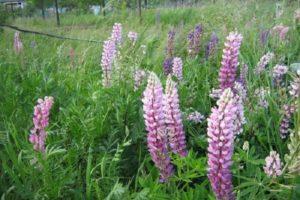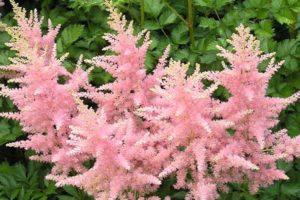How to prepare a delphinium for winter, when and whether to trim, how to cover and preserve
The unusual arrangement of flowers on the stem and the bright color of the delphinium can give the garden a unique charm. The plant pleases with a large number of varieties that are easy to care for. In order for a garden flower to please the eye next season, you need to know the nuances of preparing a delphinium for winter.
What delphiniums can be planted before winter?
To achieve early flowering of the plant and at the same time not to bother with seedlings, experienced gardeners advise paying attention to planting before winter. The procedure in this case is carried out after the soil freezes. For subwinter planting, any varieties of delphinium are selected.
Seeds are sown in the ground at the end of autumn. Some experts point out the beginning of October. Others confirm the good germination of seeds planted in November. Practicing the option of sowing seeds before winter, it is recommended to use 25% more planting material.
Do I need to prune a delphinium for the winter?
The plant has high winter hardiness and is able to survive frosts from -40 to -45 degrees. Pruning is discarded if the plant hibernates under a thick layer of snow. In the conditions of modern winters in the Moscow region, rains more often "delight" residents than snowfalls.
In the cold season, gardeners are faced with two problems - damping and decay. Based on this, they conclude that the delphinium must be cut for the winter. Such a process cannot be left to chance.
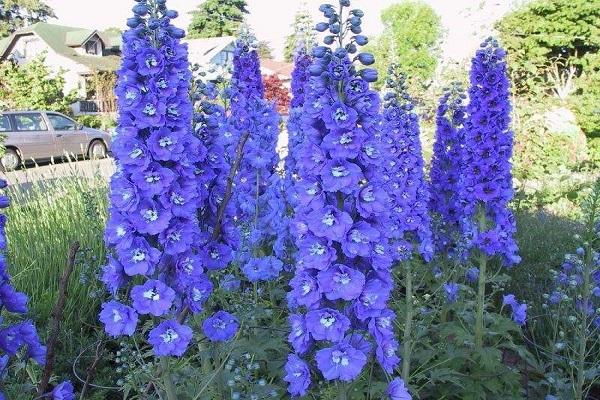
Reasons why flowers can not endure winter well
After winter, a person may find that his pet is gone. Under the force of various factors, the delphinium dies. There are several reasons why the flower cannot stand the winter.
Unsuitable climate
Delphinium, as mentioned earlier, tolerates even the most extreme temperatures under a cover of snow. A person who decides to grow a flower must take into account the climatic features of the southern regions. In winter, the weather often changes, and the temperature drops are very sharp. Whether the delphinium will survive the coldest season depends on the type of plant.
When buying a delphinium variety, people often do not pay attention to the recommendations that are indicated on the package. For each region, certain categories of plants are displayed. Inattention on the part of a person can cause disappointment in a delphinium. Therefore, people often refuse to grow it.
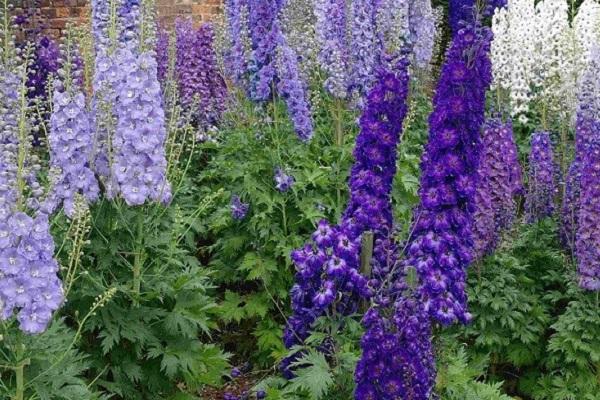
Dampness
The flower is afraid of high humidity, especially if it happens in winter. Waterlogging leads to root decay and plant death. To avoid such a fate, the delphinium is planted on a hill with good drainage.
So that moisture goes deep into the ground and does not stagnate in the area of \ u200b \ u200bthe roots, at the time of planting, the hole is half covered with sand. Other material can be used as drainage. Some gardeners prefer small pebbles.
Incorrect cropping
Inexperienced gardeners carry out the wrong shoot removal. Wanting to get a second bloom, they cut the greens at the root immediately after the flowers wilt. The performed manipulation negatively affects the plant, weakening it. As a result, the bushes die in winter.

You can promote re-flowering and help the delphinium survive the winter by pruning the inflorescence above the top leaf. The procedure is also carried out just before the colds. Unfortunately, many mistakes are made again during trimming.
After that, the stems are left at a height of 15-30 cm from the soil surface. From above, the tips are covered with clay. To prevent water from getting inside, it is enough to break the stems, leaving them bent.
When to prune a delphinium in autumn?
The time to trim the stems depends on the flowering period of the variety. It can range from 1 to 2 weeks. On average, the procedure falls on the end of September.
By this time, the warm weather outside has time to change to a steady cold. The pruning procedure is carried out in the morning. Better to choose a day without precipitation.
Other gardeners advise against pruning. Old shoots are easily removed in spring. A person can try two methods at will.
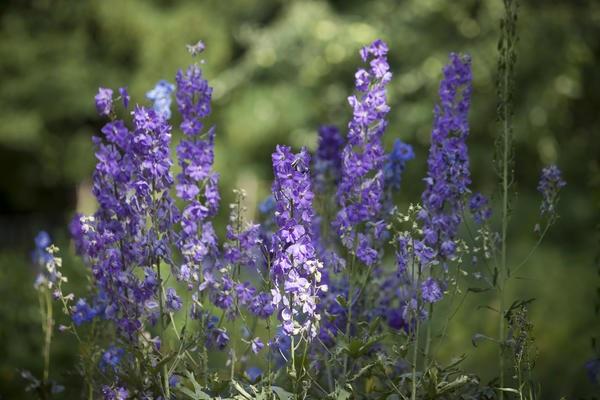
How to prepare a delphinium for winter?
The opinions of gardeners about winter hardiness differ. Some people think that delphiniums do not need careful preparation for wintering. Others argue that the plant is so whimsical and delicate that it can die if a person takes care of it on its own. The flower is represented by different varieties that have certain biological characteristics.
Annuals
The varieties included in this group are distinguished by their unpretentiousness. You can observe their growth not only in the southern, but also in the northern regions. To have flowers in the garden year after year, you will have to try.
In September, the seeds are harvested and stored until spring, until the time for planting. Winter landing is also permitted. Sowing is recommended to be done in a permanent place with good illumination. The planting material is placed in the ground to a depth of 4-5 mm.
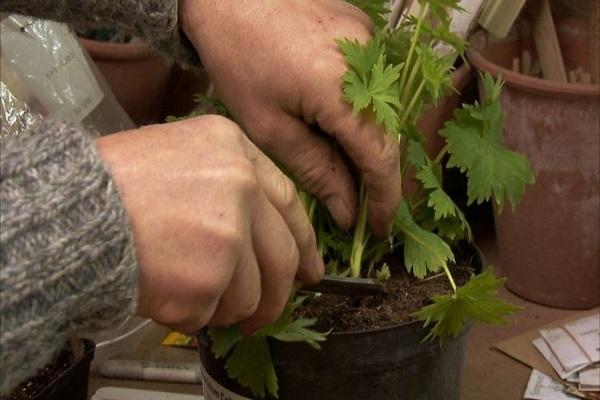
Perennial
After the flowering of the delphinium, gardeners take care of it. Preparation for winter begins in the fall:
- The stems are cut. The height of the shoots left does not exceed 30 cm above the soil surface.
- Dry leaves around the plant are collected and burned. Weeds are also destroyed.
- After cleaning the territory, they proceed to loosening the earth.
- Stakes are taken from the site, to which flowers were tied.
- They are engaged in the preparation of stems for wintering. To do this, follow the standard pattern using clay. If necessary, the plant is covered.
Sometimes the flower needs care even in the cold season. As a rule, attention is paid to watering. Moisture saturation continues until the onset of frost. Frequent and regular watering helps the delphinium survive the winter successfully.
Marfin hybrids
The varieties were bred by breeders from the Moscow region. They are in no way inferior to foreign hybrids. Cultivation in the northern and central regions of the country does without shelter.
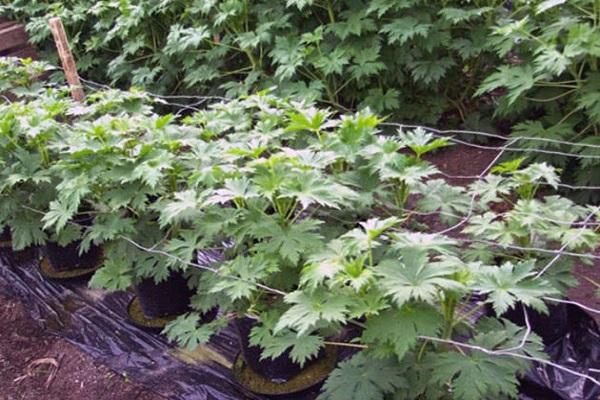
Varieties from the Belladonna group
Representatives are also winter hardiness. Do not require additional shelter in the presence of snow cover.
Pacific and New Zealand varieties
They take root in the southern regions. They do not tolerate cold, since they were bred in a subtropical climate.In the Moscow region, they endure the winter cold, provided that they are covered with spruce branches. After the first flowering, the plant dies.
Storage methods
With the onset of winter, gardeners are considering 2 options for preparing a delphinium for winter:
- trimming;
- use of shelter.
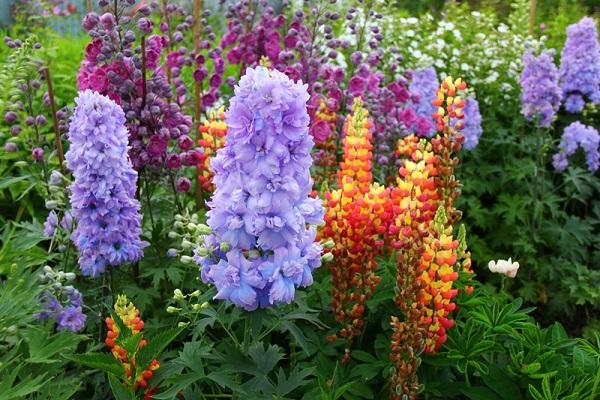
In the first case, the stems are cut off, and the edges are covered with clay. The root area is sprinkled with mulch. The option is more suitable for snowy winters.
The second preservation method also involves pruning the stems and treating them with clay. In order to prevent the plant from dying, use additional shelter. Coniferous branches are most often chosen. This approach will save the delphinium in a wet winter.
Preservation nuances
The correct procedure for preparing a delphinium for wintering will save it from the threat of developing diseases. Many gardeners are pruning at the wrong time. As a rule, they forget to do it on time and delay the procedure. This will not only affect the plant's ability to endure the winter, but also prevent the full development of the buds.
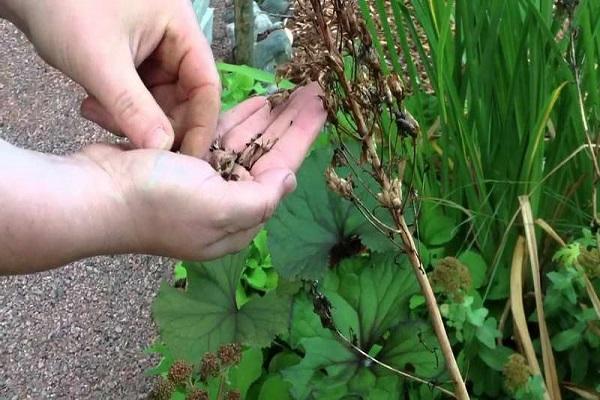
Experts advise against stimulating kidney formation in the fall. They also recommend giving up the idea of re-flowering before winter. Delphinium stems are pruned at the onset of stable cold weather.
If the flowers were planted in the spring, they continue their development until the onset of cold weather. In late autumn, they can be in the budding stage. In this case, it is not clear to a person whether they are ready for wintering or not.
If the plant is young, as a rule, by late autumn, the process of bud formation has time to occur. New flowers tolerate winters better, unlike representatives that have been growing in the garden for a long time. This is because they are less prone to root rot.

In regions with warm winters, people are ready for frequent thaws. Knowing the temperature regime, they carefully prepare the plants for wintering. A canopy or something similar to a hut is erected over the landing. Thus, the delphinium is protected from excess moisture and frequent gusts of wind.
Insulation material
If new plants are planted in the spring, they need extra cover. Straw will help to save from frost and a large amount of snow. It is an excellent alternative to coniferous branches.
It is not recommended to use peat or leaves to hide the delphinium. They are able to retain moisture. In turn, this leads to the development of the fungus and the diseases associated with it. Excess moisture attracts slugs and various pests.

After the snow melts in early spring, the delphinium wakes up and is ready to grow. At the same time, night frosts are not a hindrance. There are times when the plant is poorly rooted. Thus, it is deepened so that the kidneys are not damaged.
Delphinium is a beautiful and unusual plant. Its growth and full development depends on the conditions that will be created by man. Disregard of simple rules leads to the fact that the plant dies. This issue is especially relevant in the winter season. A little effort and attention of gardeners, and the delphinium will thank with abundant flowering, decorate the flower beds throughout the summer.
